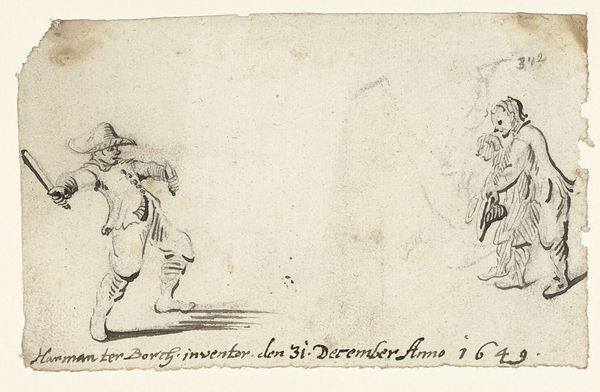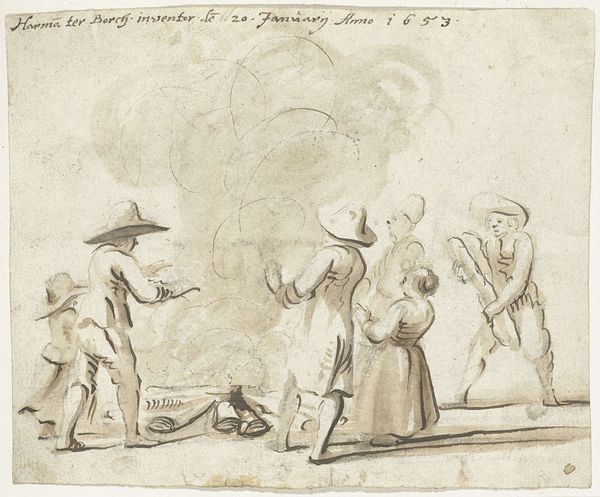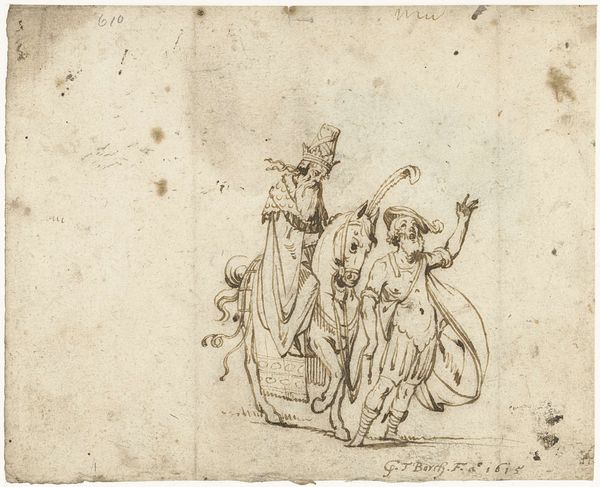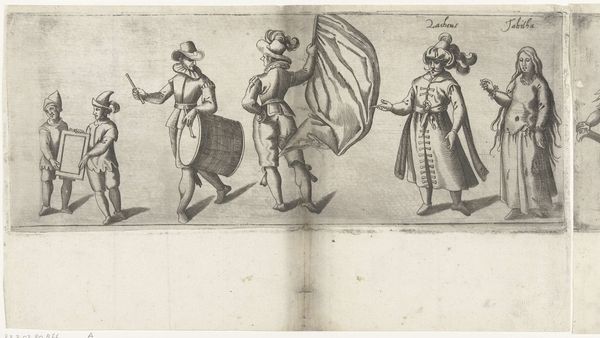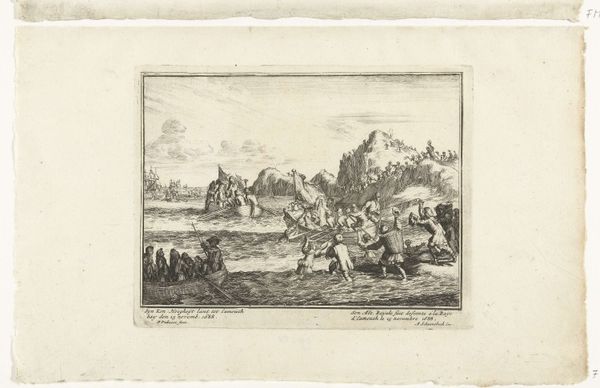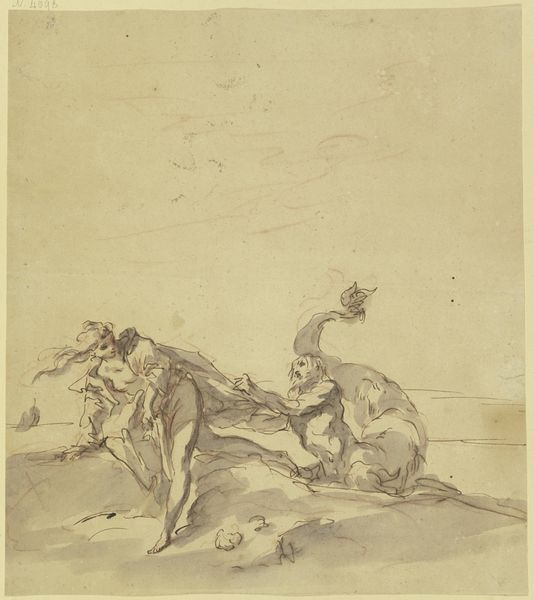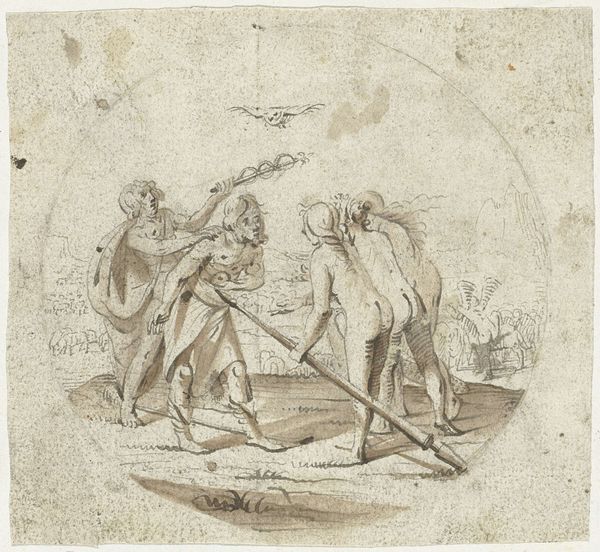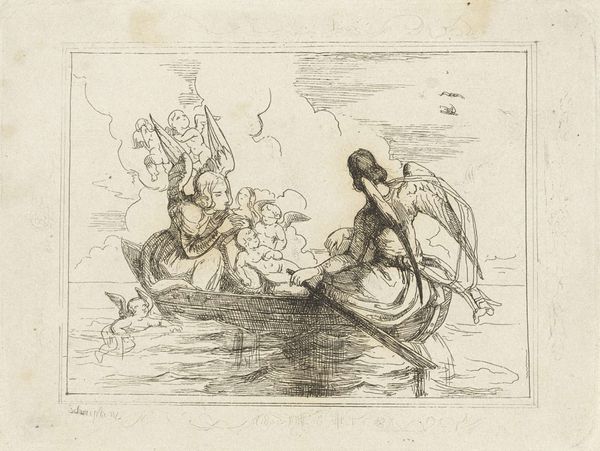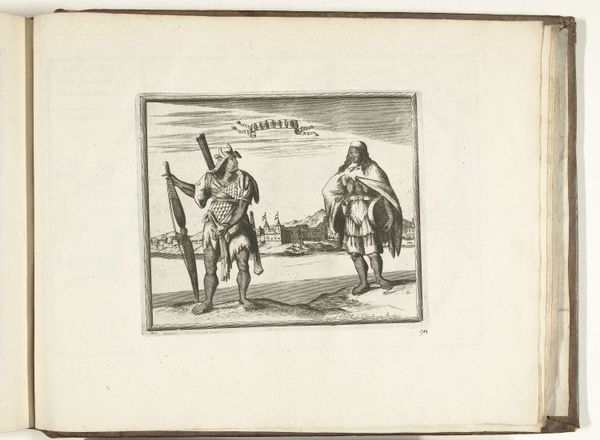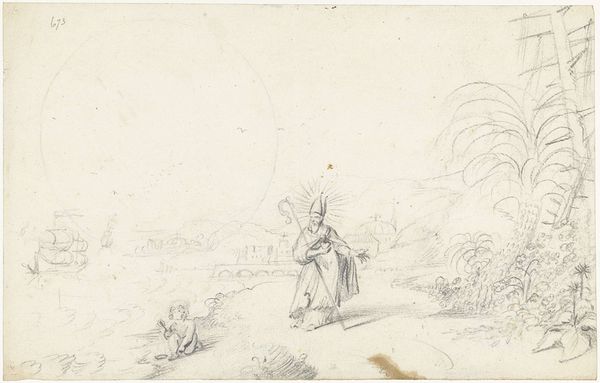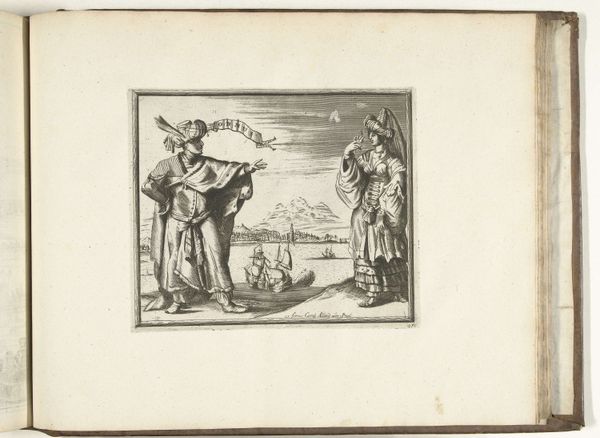
drawing, paper, ink
#
drawing
#
narrative-art
#
baroque
#
paper
#
ink
#
genre-painting
Dimensions: height 162 mm, width 160 mm
Copyright: Rijks Museum: Open Domain
Curator: Welcome. Before us, we have "Tobias and the Angel," possibly from 1651, a work on paper in ink by Harmen ter Borch. Editor: My immediate impression is one of quiet drama. The limited ink wash gives it a sketch-like quality, a captured moment rather than a grand production. The slight imperfections on the aged paper add to this sense. Curator: Indeed. Let's consider the material conditions. Ter Borch, likely working in his studio, utilized readily available ink and paper to translate a biblical narrative into a Baroque idiom, situating this scene within contemporary genre painting, perhaps destined for a collector's album rather than a public altar. The act of drawing itself becomes a kind of devotional act. Editor: Absolutely. The figures of Tobias and the angel carry deep symbolism. The angel's pointing gesture, along with the wings, speaks of divine guidance, of a journey toward healing and redemption. The little dog is part of the traditional iconography, and faithful companionship. This imagery speaks of a universal hope for protection and a safe passage through life's trials. Curator: And look at the way ter Borch has suggested depth and form with such minimal means. The ink wash concentrates on the figures' drapery and the landscape to ground the narrative in visual terms. One notices the labor put into rendering textures, like the soft folds of fabric or the furry dog bounding towards them, contrasted with large blank sections in the sky above and ground under the figures. Editor: The relative scale of the figures is significant too. It makes them appear intimate within a much larger landscape of events, doesn’t it? Perhaps a recognition that even monumental tales ultimately boil down to individual experience. I read humility in Tobias's demeanor as he accepts his guide's leadership. Curator: This drawing allows us to see how these well known, sacred themes get processed through the lens of early modern art practices and economic demands, reminding us that artistic production, even of Biblical scenes, is embedded in a specific network of materials and the artist’s labor. Editor: A lovely, evocative example of enduring symbolism rendered through the hand of a skilled artist. Curator: Agreed. Its simplicity and restraint reveal both its social origins, and how the weight of an important story can come through beautifully within such limited parameters.
Comments
No comments
Be the first to comment and join the conversation on the ultimate creative platform.
